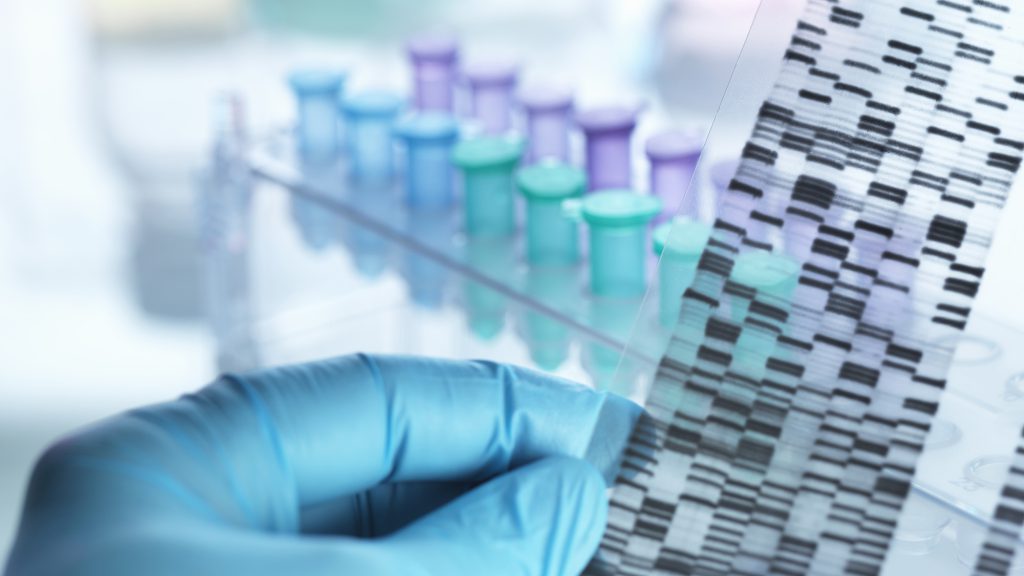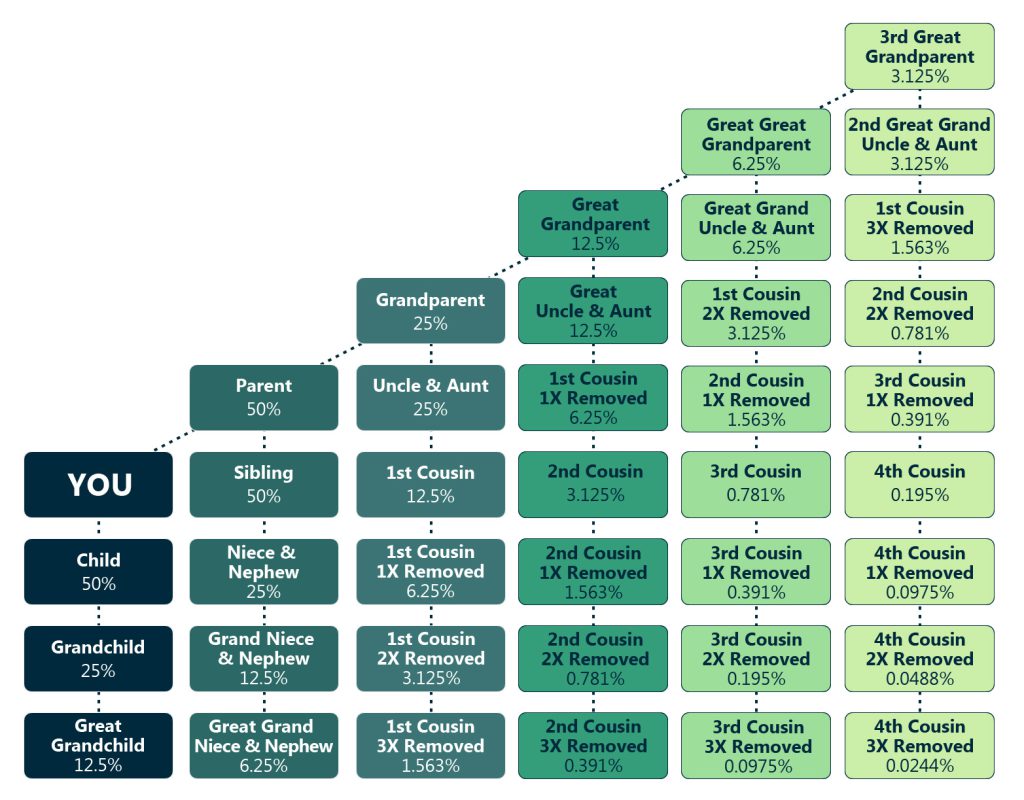Ancestry Tests Pose a Threat to Our Social Fabric

I have never understood why anybody would think humans are by nature violent, warlike creatures. True, we have all surely had arguments turn sour and go off the rails—arguments sometimes so extreme, or even deadly, that we later wish we could take back what we have said and undo what has happened. So yes, we humans do have the physical and emotional capacity to be nasty and even violent creatures when we feel threatened or frightened. Yet if there is anything about being human written in our genes by evolution, it’s not that we are dangerous animals. Instead, it’s that we are one of Earth’s strongly social life forms. Some of us may not be as social as others. Yet most of us know that the words “gosh, I need a hug” are about more than just a sudden call for physical contact. Most of us not only want to be around others, we also need to be. That’s just being human.
If I am right that our kind of animal not only likes but needs to feel connected with others of our kind, then perhaps this human trait may explain in part why many people today are sending off some of their spit or a used buccal swab to a for-profit genotyping service, such as AncestryDNA and 23andMe. People may have many different reasons—perhaps quite personal—but they may include discovering new relatives to connect with, perhaps even folks to invite for dinner next Thanksgiving or Christmas.
Whatever the motivations, the current popularity of commercial genetic profiling worries me for two reasons. One is that these companies may be promising results they can’t actually deliver. The notion, for example, that our genes can be used to trace our personal ancestry far back into the past—say, to Genghis Khan, the Emperor Charlemagne, or one of the pharaohs of ancient Egypt—makes little statistical sense. You may disagree, but to me this comes across as selling something more akin to snake oil than science.
What worries me most, however, is that companies offering personal genetic testing customarily seem to report back to those sending along a sample of their spit that they are a mix of different “ethnicities.” This is more than simply statistical nonsense. I fear doing this can also be dangerous. Claiming that it is possible to map ancestry in this fashion may be giving discredited old ideas about ethnicity and race new visibility.
Before tackling my second concern, however, let’s first talk about everyone’s least favorite topic, namely statistics.
To weigh the pros and cons of commercial genetic testing, it is worth working through the numbers.
Despite the wars, border tensions, and other types of violence that stem from perceptions of human difference, we are approximately 99.9 percent identical to every other human on Earth in terms of our genetics. In short, we are all cousins. Even when you drill into the specifics of the remaining 0.1 percent to learn something more detailed about your biological ties, don’t get your hopes up that you can identify real ancestors very far back in time.
Here’s the basic math. We inherit roughly half our genes from our mothers and half from our fathers. If one or both of them should be unknown to you, it is a safe bet gene profiling may help you track them down. But how far back across the generations can you go and have similarly assured success? Go back, say, five more generations to your great, great, great, great grandparents. Assuming there hasn’t been a lot of inbreeding in your ancestry (the further you go back in time, by the way, the more likely it occurred), you should have 64 of them. Only about 1.56 percent of your genes may come down to you from any one of these 64 ancestors. Good luck should you go looking for them many generations back—or their living descendants.
Now go even further back in time to the 17th or 18th century. The number of folks on average living then who could have contributed to your genetic endowment is so large (more than 1,000), and their possible genetic contribution so small (about 0.098 percent for 10 generations back), it would be smoke and mirrors to assert claims about who they were in person. In fact, most of these people left no trace of themselves in your genome.
In short, while it can be hard to get your head around the statistics involved, go back more than a few thousand years and you are genealogically related to almost everyone on Earth. Genetically speaking, however, very few of these very distant ancestors contributed something of themselves biologically to your genome.
Given all this, it is hard for me to understand why the results sent back to clients by commercial genetics laboratories are commonly reported as “ethnicity estimates” expressed as percentages adding up to 100 percent. For example, you might be told you are something like: 48 percent West European, 27 percent Scandinavian, 9 percent Irish/Scottish/Welsh, 7 percent Finnish/Russian, 4 percent British, 3 percent East European, and 2 percent other.
These figures are derived by statistical comparison with the genetic profiles of “reference” samples of individuals thought (by those in the laboratory working on your spit or swab) to be “native” to this or that region of the world. However, and here is the main point, you can be native to a place (in the sense that you and your relatives have lived there for a long time) without being genetically typical or “representative” of that place. One reason is the geographic mobility of people throughout human history. Another, and perhaps less obvious, reason is the mobility of our genes. Thanks to the time-honored practice of sexual intercourse, genes can spread far and wide, even if the individuals involved don’t. Given enough (generational) time, as well as the pleasurable human motivations involved, genes can travel the globe.
At this point I suspect you may be saying to yourself something like: “But wait a minute, isn’t it true that until recently humankind was subdivided into separate tribes, populations, races, or subspecies that only began to meet and mix after Columbus found the New World in 1492?”
If that is what you are thinking, here’s my answer: No, it isn’t true, even if lots of people nowadays continue to believe that once upon a time human beings existed on Earth in different varieties generically called “races.”
People don’t live in cages. As an anthropologist who has worked in the South Pacific for more than half a century, I know firsthand that all of us are linked with one another far and wide in enduring social networks that—more often than not—pay scant attention to even seemingly insurmountable differences in language, wealth, social standing, and the like. When it comes to having friends and making love, there has always been a will and a way, regardless of any borders or boundaries.
This is why I worry that by reporting their laboratory results as “ethnicity estimates,” companies may be giving their clients misleading fuel for potentially harmful racial (and racist) beliefs.
Are commercial laboratories trying to foster racism and racist beliefs? I doubt it. In any case, a common defense of commercial DNA testing is that what they are selling us is just playful fun, a kind of trendy popular entertainment. As one commentator observed: “We once looked to the stars to amuse, enlighten, and guide us; now we can look to DNA.” The implication is that we would be fools to take commercial DNA testing any more seriously than astrology.
But here’s the rub. Even if people don’t take commercial genetic testing seriously, they risk internalizing the outdated social and scientific assumptions hidden behind these reported results. As an anthropologist, I may be overly sensitive to the potential here for psychological, social, and political harm. Yet I cannot get away from the worry that having our genes profiled in this cavalier fashion can all too easily play into popular notions—and prejudices—that aren’t based on science but instead are grounded on Western assumptions about race and what it means to be a human being.
Human races are inventions of the human mind. Substituting words like “ancestry” or “heritage” for the disreputable old term “race” may sound like progress, but it isn’t. These tests are about more than just having fun with expensive laboratory equipment. By encouraging us to see ourselves as a mix of allegedly different ethnic groups, populations, races, and the like rather than as a mix of genes, commercial DNA tests may lend seeming scientific credence to ideas that by now ought to have been long dead and buried—enduring assumptions about human diversity that have ripped the world apart for far too long.
There is much to think about before signing up and sending off your spittle or swab. If you are like me, perhaps you are content with the number of relatives you now have, and you have no pressing need to add genetics data to your curriculum vitae or insurance records. Alternatively, if you do want to have more relatives around your table at Thanksgiving or Christmas than you have now, don’t waste your spit or the time it takes to collect it. You are 99.9 percent related to everyone else on Earth. There is no need to send anything off to anybody. Just look next door and down the street. Open your eyes and your heart. You can have all the cousins you want.





























